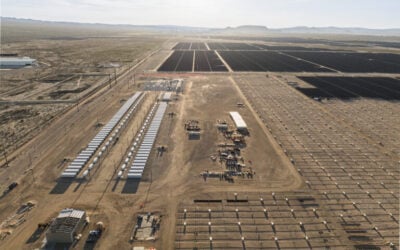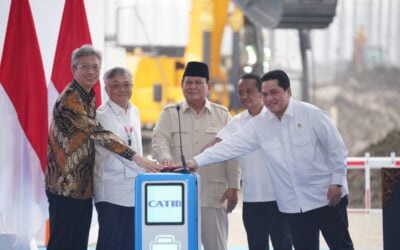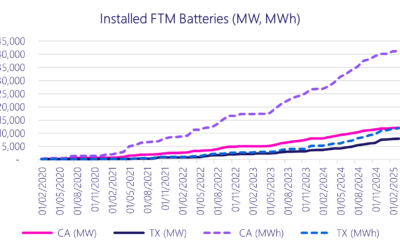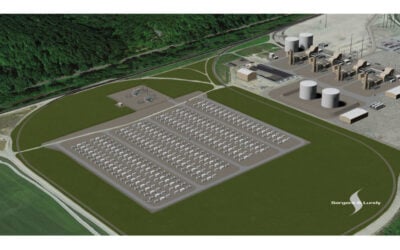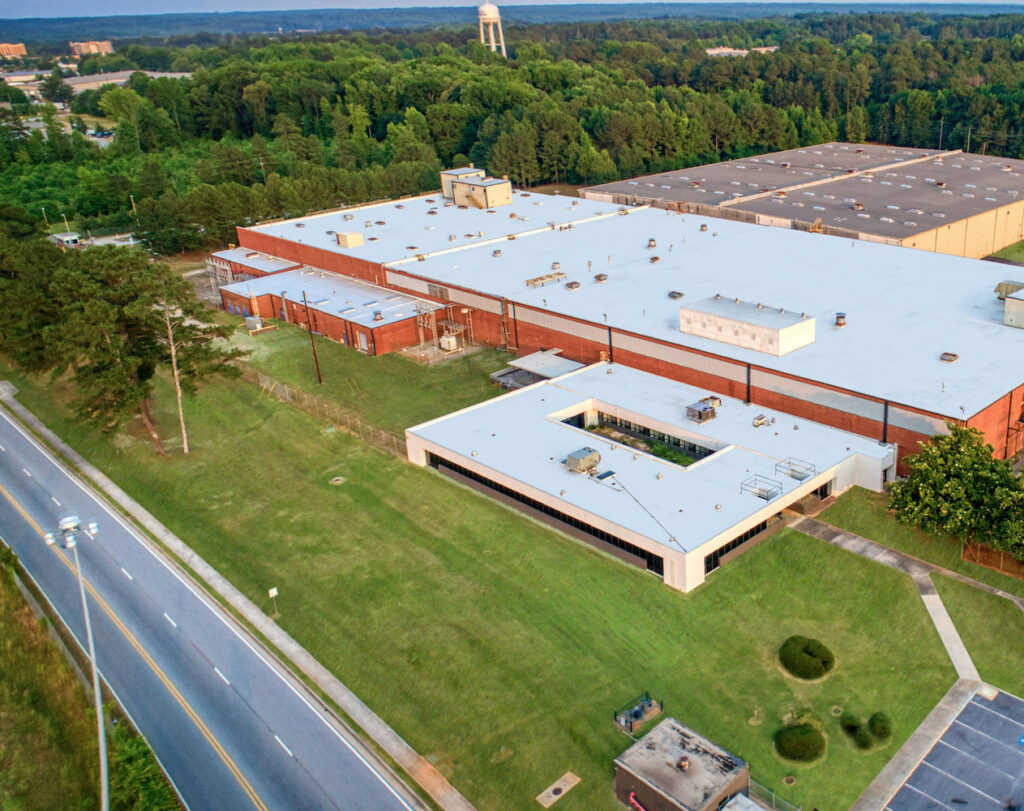
The company behind what is claimed will be the largest lithium-ion battery recycling facility in North America intends to process as much material as it can from the energy storage system (ESS) industry.
Battery Resourcers announced earlier this month that it will make a 154,000 square foot commercial-scale recycling facility fully operational in Georgia, US, during August this year. It will be able to process 30,000 metric tonnes of discarded lithium batteries as well as scrap, creating new battery grade lithium, cobalt and nickel from old devices.
Enjoy 12 months of exclusive analysis
- Regular insight and analysis of the industry’s biggest developments
- In-depth interviews with the industry’s leading figures
- Annual digital subscription to the PV Tech Power journal
- Discounts on Solar Media’s portfolio of events, in-person and virtual
The company has partnerships with automotive sector player Honda and counts Jaguar Land Rover’s venture arm among its investors. However, Battery Resourcers told Energy-Storage.news that while electric vehicles will be the main focus of its efforts, it will also be recycling batteries from stationary energy storage systems.
“We intend to take on as much as possible from ESS though we expect the EV market to dominate,” a company spokesperson said, after confirming that its facility will be able to take and recycle ESS batteries.
Materials produced will not be sold directly back into the ESS market, instead they will “likely go through [battery] cell manufacturers,” the Battery Resourcers representative said.
Currently with pilot plants and R&D centres in Michigan and Massachusetts, Battery Resourcers is siting the new facility in Covington, Georgia, to be close to EV manufacturing hubs and lithium-ion battery gigafactories, with SK Innovation currently building two factories with dozens of gigawatt-hours of annual battery production capacity in the state.
Having secured US$70 million funding in September last year and US$20 million through a Series B round just over a year before that, the company will be investing US$43 million into the Georgia plant.
Georgia Governor Brian Kemp warmly welcomed the news, calling Battery Resourcers “the latest job creator to move to Georgia because of our leadership position in the electric vehicle manufacturing space,” calling the Covington facility “state-of-the-art”.
With plans to also open facilities in Asia and Europe, as well as further new plants in North America, Battery Resourcers wants to be able to process up to 150,000 metric tonnes of material from lithium-ion batteries each year.
Recycled materials can be competitive on performance and cost
Its recycling process can be competitive with mining new materials on sustainability and performance as well as cost, the company claimed. A process it is developing for making cathode active materials, called ‘Hydro-to-Cathode’ could be 93% cleaner than mining and producing from new raw materials — at less than half of the cost.
A study published in scientific journal Joule even said the recycled cathode could outperform new cathode materials by as much as 53%.
Director and CEO of Battery Resourcers, Michael O’Kronley, said that his company wanted to offer automotive OEMs “responsible and cost-effective disposal” options for their “mountains of discarded batteries and scrap,” while minimising the need for mining through returning valuable battery grade materials back into the supply chain.
“As an industry, we need to match the capacity of the gigafactories producing millions of batteries with our own ‘gigarecycling’ facilities that can recycle millions of batteries,” O’Kronley said.
“Our Covington facility will be the largest in North America this summer, but we encourage development of recycling facilities even larger than this one. We all win when we prevent batteries from going to landfill.”
The company spokesperson told Energy-Storage.news the Hydro-to-Cathode process could offer enhanced cycle life for batteries, which could be of particular interest to the ESS industry. Additionally, some ESS project permitting processes now require developers or project owners to commit to decommissioning and disposing of equipment at the end of the project’s life in order to get approvals.
Being able to put in place battery recycling contracts could be beneficial to the ESS sector from this perspective, the spokesperson said.
“There is no real difference in our technology or business model whether the batteries come from an EV or an ESS but chemistry will have an impact,” the spokesperson added.
For example there will be differences between lithium iron phosphate (LFP) and nickel manganese cobalt (NMC) — or other oxide-based cathode materials — process technologies and the resulting economics.
Other lithium-ion recycling efforts at commercial scale are being undertaken by the likes of Canada-headquartered Li-Cycle, which is opening facilities in the West Coast and southern US as well as existing plants in its home country and Upstate New York. Li-Cycle also has agreements in place with a number of companies serving the ESS sector, including a recent nickel off-take deal signed with LG Energy Solution and LG Chem.
Also in North America is Redwood Materials, led by former Tesla chief technical officer JB Straubel, which raised more than US$700 million in investment last year. Straubel told US Secretary of Energy Jennifer Granholm at an event a few months ago that recycling materials can indeed be competitive with the cost of sourcing them new.
Northvolt, which is building battery gigafactories totalling 150GWh of annual production capacity in northern Europe, has opened its own recycling venture and in November announced it had made a battery cell using 100% recycled nickel, manganese and cobalt. The recycling venture, called Revolt, could be scaled up in future to process up to 125,000 tonnes of batteries, equivalent to about 30GWh per year.
The US government has stressed the importance of sustainability and therefore recycling in battery supply chains, while the European Union plans to introduce recycled materials requirements into battery regulations in the next few years.
The head of Fortum, an energy company owned by the state of Finland, told Energy-Storage.news last June that the ESS industry will be a significant source of batteries for recycling, echoing an opinion voiced by Li-Cycle’s chief commercial officer Kunal Phalpher earlier that month in an interview with the site.


